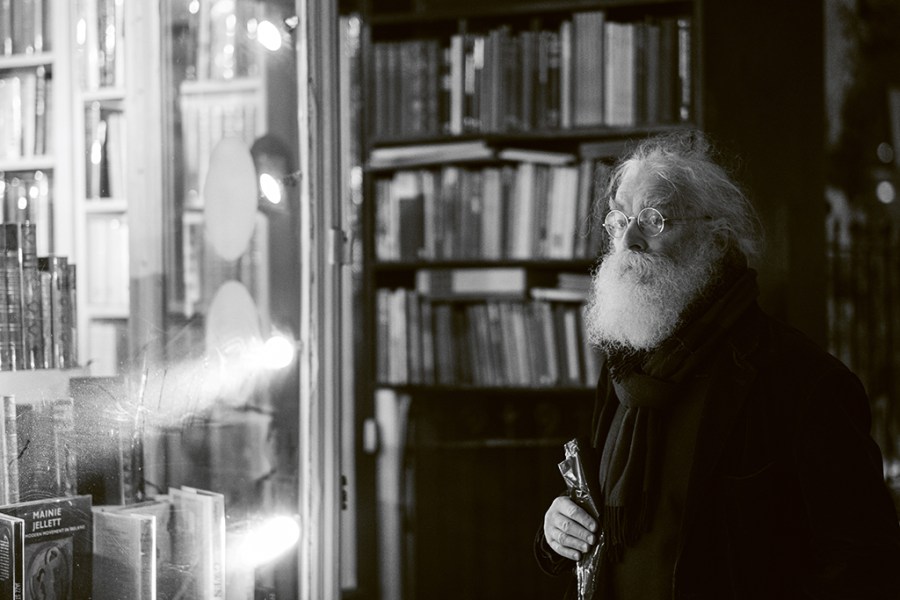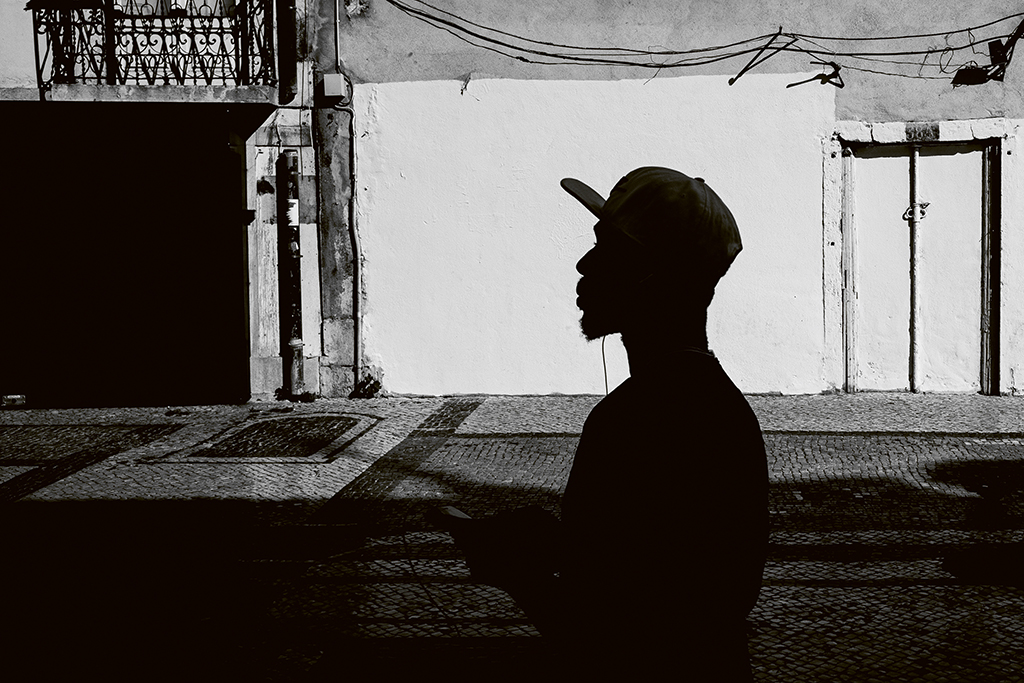How do you go about learning to see in black & white and decide which subjects work better without colour? Brian Lloyd Duckett shares some essential advice and techniques with Geoff Harris
Why choose to shoot in black & white? Because it looks cool? Because it was/is the medium of choice of legendary photographers such as Henri Cartier-Bresson, Mary Ellen Mark or Don McCullin? Because you like street photography or moody landscape work and feel it ought to be in monochrome?
To succeed in black & white photography, you will usually need more compelling reasons than these for it to be creatively rewarding and grab the attention of other people. There is no easy answer or handy checklist, but as with everything, we can learn from experienced photographers who have worked successfully in this area for a long time.

Modern buildings, particularly those built in the ’60s and ’70s, often have a variety of richly textured surfaces, which translate well h translate well to black & white
Brian Lloyd Duckett, the principal and course tutor at street photography specialists Streetsnappers, has brought out a great new book, 52 Assignments: Black and White Photography. We asked Brian to share some of his advice and insights to help us all to see more effectively in black & white so that we can better decide when to use it.
How to decide on black & white
‘What was once a technical constraint – once you loaded black & white film you were stuck with it – is now a creative option and we have the luxury of being able to make an informed choice either before or after the event,’ Brian explains. ‘However, I’ve always believed that the decision to shoot in black & white should be made with intent, ideally before the shutter is pressed.
The alternative is looking at a colour image and thinking, afterwards, “That looks a bit boring, I’ll see if it’s any better if I convert it to black & white” – which is the wrong way round. It’s far better to visualise a black & white shot at the design stage. It should be a deliberate aesthetic decision rather than an afterthought or an attempt to rescue a boring image.’

Great black & white photographers are able to pre-visualise how colours will look. The gradation in the sky’s tones can be easily achieved by tweaking the colour sliders in your editing software
When Brian started out as a photographer, he didn’t have much choice when it came to shooting in black & white, and this proved to be helpful later on. ‘I started shooting film as an impoverished student and couldn’t afford colour. Black & white film was cheaper to buy and I could develop it myself – much to the consternation of my parents, who could only take so much of the smell of fixer in the bathroom. So my first experiences of “seeing” in black & white were watching a print emerge in the developing tray under the glow of a red light.’
Brian’s first job was doing work experience at the local paper in the summer holidays and, rather morbidly, his first published picture was of a dead dog in a litter bin – in black & white of course. ‘Colour only really came into newspaper photography in 1986 with the launch of the Today tabloid so, prior to that, seeing in black & white was the norm – you had to instinctively feel how an image would look on the page: the tones, the contrast, the form and the textures.
‘I think I’ve always tried to look beyond the colour, almost blanking it out and visualising how the frame will look in monochrome. I remember some of the Gestalt principles we were taught when I did A level photography – one of them being “simplicity”, whereby we try to reduce an image to its simplest form; this works very well in helping to see in black & white and I use it when teaching my workshop students today.
‘If I were starting out again now, life would be much easier, especially with a mirrorless camera which would allow me to preview the world in black & white before pressing the shutter.’
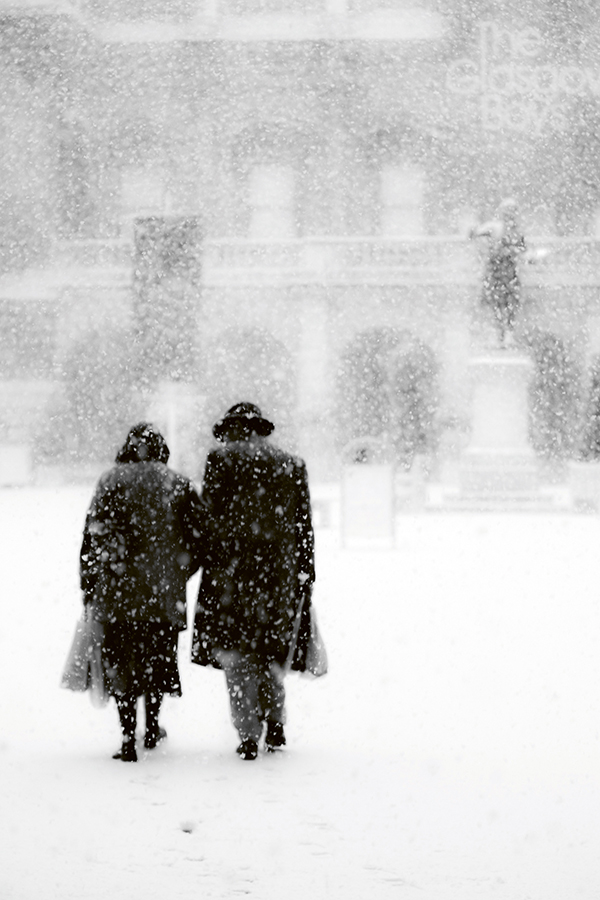
Less is often more with black & white: the brightness of the snow masks out any distracting background detail
Have a clear sense of purpose
Digital cameras and indeed smartphones have really opened up photography but Brian believes it’s been a mixed blessing for black & white photographers. ‘Digital has a lot to answer for as it’s removed much of the thinking from photography. It’s too easy to “spray and pray” without giving too much thought either to the creative process or to what’s happening technically.’
With street photography, however, Brian believes that there is a counter-argument. ‘If you look at some of the great street photographers at work – Garry Winogrand, William Klein and Daido Moriyama spring to mind – you can see them shooting compulsively and instinctively, getting through dozens of rolls of film in a single day. If they slowed down to think too deeply about ‘seeing in black & white’, then the spontaneity, the instinct, the sense of moment and the energy would be missing from many of their notable images.’
For Brian, this whole question takes us back to his earlier point: everything needs to be done with a clear sense of purpose. ‘So if I’m planning to shoot in black & white, I’ll stick to that plan. Assuming I’m shooting digitally, I’ll shoot in raw and will set my viewfinder to monochrome. This means that I’m not only conceptualising the world in black & white, I’m physically visualising it that way too.’
Getting to the heart of the image
When putting together AP’s obituary for documentary photographer Tom Stoddart, we referred back to a famous quote by Canadian photographer Ted Grant: ‘With colour photography you see the colour of somebody’s clothes, with black & white you see the colour of their soul.’ Does Brian subscribe to this?
‘I’m not so sure… I think this quote is a bit overplayed these days. We live in a colourful world and our eyes see in colour, so colour photography is realism; black & white is an abstraction. Having said that, there’s a grain of truth in Ted’s quote. Black & white can help strip away the irrelevances and the distractions of colour, taking the viewer’s eye, Exocet-like, to the heart of the image.
‘However, there’s an alternative take on this. Just look at the rich, vibrant moods from Fred Herzog in his seminal book, Modern Colour, which has “soul” in bucket loads and which kind of disproves Grant’s point. So I think it’s less about the medium and more about the photographer’s ability to create an image which draws the viewer in and connects with them on an emotional level. Black & white and colour can do this equally effectively.’
Don’t just default to mono
There is a tendency for a lot of photographers to switch automatically to black & white for certain subjects – winter landscapes, gritty urban portraits and indeed a lot of street photography generally. Then people jump back to colour for macro images or sunny travel shots, for instance. Does Brian think we should all be more creative and think outside the box more when deciding what and when to shoot in black & white?
‘Yes. I think a lot of people, especially street photographers, think that certain types of image “should” be shot in black & white – and often without good reason (other than it looks more “street”). I’ve never been sure why, although it could be because the photographer wants to associate their work with some of the iconic black & white street shots from the 1960s and ’70s. Or perhaps it’s a throwback to the first half of the last century when colour was seen as the work of the devil by the photographic establishment!’
Brian is very clear that we shouldn’t have generalised pre-conceptions about whether a particular genre should be shot in black & white or colour – least of all street photography. ‘Photography needs to evolve and sometimes it feels like we’re all stuck in a rut, doing the same stuff over and over again – you can see plenty of evidence of this in some camera club competitions.
One approach I’ve always liked is to perceive black & white photography as an art form in itself. In fact, I know people whose total output is in black & white and in a way I’m quite envious of this approach – it removes all the angst over making the decision about colour.’
Colour or mono: stay flexible
Brian’s book does a great job of ‘selling’ black & white photography, so much so that you’re left wondering why not use it all the time. It is therefore surprising to hear that most of Brian’s output is now in colour. What gives?
‘I tend to shoot black & white mainly for specific projects rather than random images. For example, I’m currently working on a project called Soho Noir which is all shot after dark. The night-time streets of Soho have been done to death in colour and I thought I should break away and do something different. I’m enjoying experimenting with high contrast and lots of movement and I seem to be able to generate more energy in black & white than I would have done in colour. For this project I’m shooting black & white JPEGS, using the Acros film simulation in my Fujifilm cameras.’
Apart from specific projects like this, Brian always shoots raw so he has the flexibility to choose black & white if he needs it. ‘Sure, there are occasions when you won’t know whether an image works best in black & white or colour until you can see the two edited shots side-by-side. You may ask yourself “which version helps me to better tell the story?” or “which one is going to look better as a 20×16 fine art print?”’
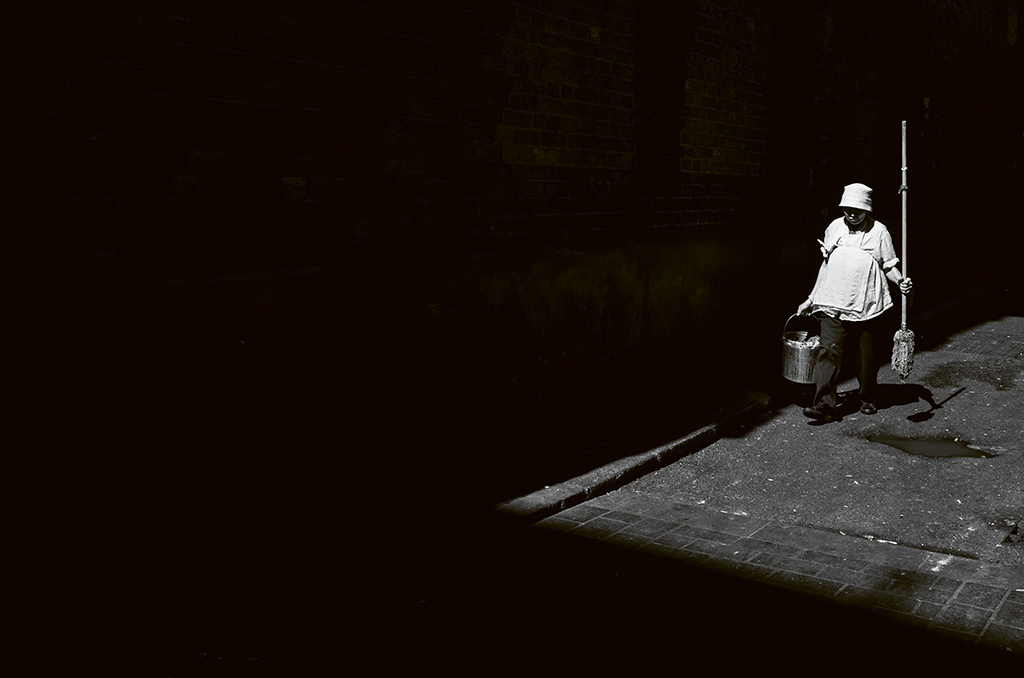
The woman’s white clothing pops against the black negative space, which, combined with her positioning towards the edge of the frame, helps create a feeling of insignificance or displacement
The value of printing
Staying on this subject, Brian is a huge fan of printing and believes it’s a real shame so many of us have thousands of good images languishing on hard drives. ‘There’s so much joy in having a lovely print in your hands – especially a black & white one that’s been printed on decent paper.
‘I’m pleased to say that darkroom skills are actually still alive and kicking – evidenced by the fact that the Analogue Zone at last year’s Photography Show was one of the busiest areas. Schools, colleges and universities are now focusing more on these traditional skills to there’s a big “ground up” movement to keep them going.
‘That said, I appreciate that not everyone wants to shoot film – or has access to a darkroom – so editing software is the next best thing. Most of what we do in the darkroom is based around dodging, burning, cropping and changes to exposure and contrast, and software can do all that perfectly well. I think the challenge is to just do what’s necessary and not to get carried away with effects – but maybe that’s my documentary background telling me to stick with “authenticity”!’
Learn from film
The film revival shows no sign of slowing down, and Brian is very much in favour of the current interest in analogue. So what particular qualities does black & white film bring to black & white photography – there’s grain, obviously, but what else?
‘I remember being overjoyed when vinyl started to make a comeback in music and I feel the same about film. For me, film has a lovely naturalness and a real-world quality that is missing from digital. Digital is, of course, marvellous but sometimes it just too “good” – too sharp – too perfect.
‘Film is generally less harsh than digital, with more forgiving tones, and this is illustrated perfectly in black & white portraits, which can have beautifully even and flattering skin tones. In fact, if I’m shooting black & white digitally, an important part of my workflow is to dial down the clarity a little: this in itself can help give a softer, more filmic, look.
‘However, the end result is only part of the story; whilst the destination can be wonderful, it’s the journey that matters and shooting black & white film is something everyone should try.’
Brian’s top ten tips to see in black & white
Brian has the following essential advice to help if you are struggling to see in black & white
- Shoot some projects specifically in black & white to see how you get on – particularly projects with a documentary feel. Then ask for feedback, from your peers in a camera club for instance, or on online forums.
- Shoot black & white by design rather than by accident. Never use it as a means to rescue poor colour images.
- Set your viewfinder/LCD screen to monochrome to aid the ‘seeing in black & white’ process.
- Work on your photographic style and find a way to integrate black & white shooting into that style.
- Musicians use expression in their creations and so can we. So I’ll use black & white to add expression or feeling to an image – which could mean, for example, feelings of timelessness, nostalgia, mood, mystery or ambiguity.
- Use black & white when the scene has strong graphical qualities and you want to emphasise form, lines, angles or areas of high contrast.
- If you feel that the colours are too distracting and the frame needs simplifying, black & white may help viewers better understand the image.
- Choose the subject carefully: not every scene will work well in black & white. Shooting raw and comparing the colour and black & white image side by side will help with this.
- Shoot black & white if it’s part of a project which has a consistent monochrome aesthetic throughout – and for me this usually means a documentary rather than a purely street project.
- Shoot film to help you appreciate the nuances of black & white. And if you do shoot film, don’t obsess about perfection – care more about mood and feel.
Brian Lloyd Duckett
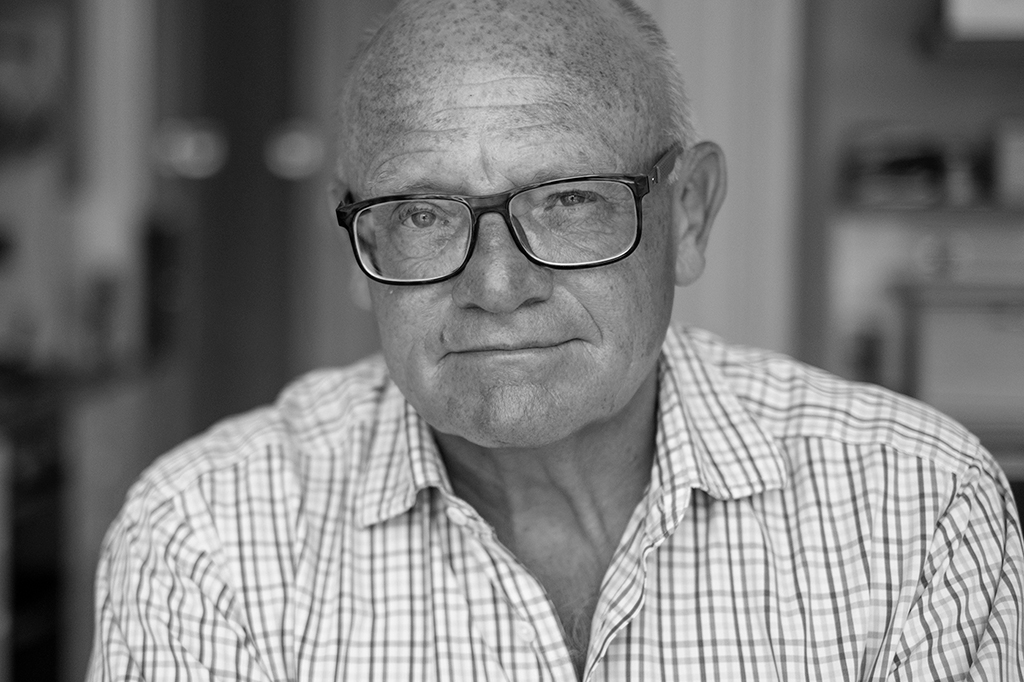
Brian Lloyd Duckett is a pro documentary and street photographer and a Fujifilm ambassador. He’s the founder of StreetSnappers
www.streetsnappers.com and runs workshops across the UK and in Europe. You can also find him on YouTube @streetsnappers.
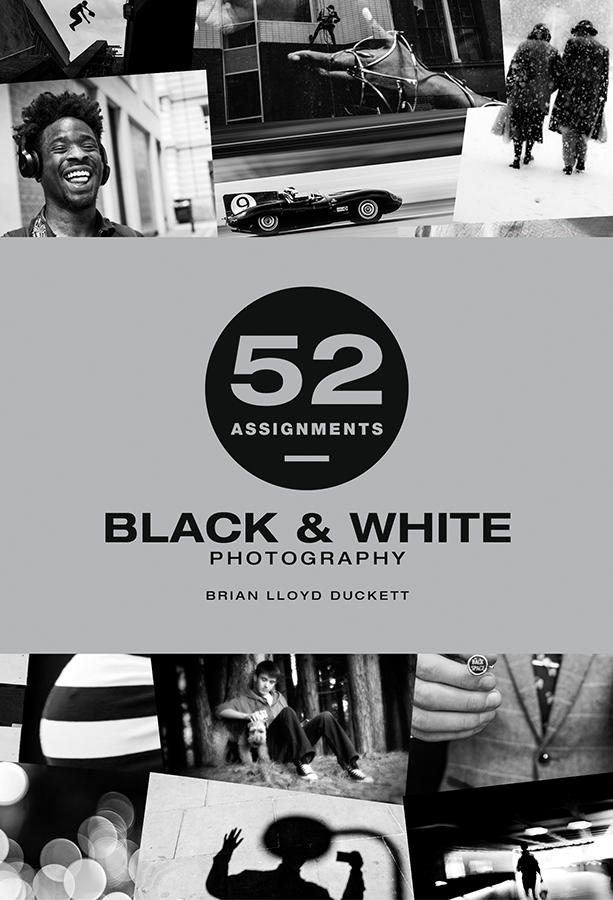
To get an exclusive 25% discount on Brian’s new book, 52 Assignments: Black & White Photography (Ammonite Press), simply visit giftstome.co.uk and apply the discount code R2201. Or you can order by phoning 01273 488005 and quoting the same discount code. Offer price £9.74 plus P&P. Offer closes 03/06/22.
52 Assignments: Black & White Photography
Further reading:
Marsel van Oosten: Why colour can be a distraction in wildlife photography

